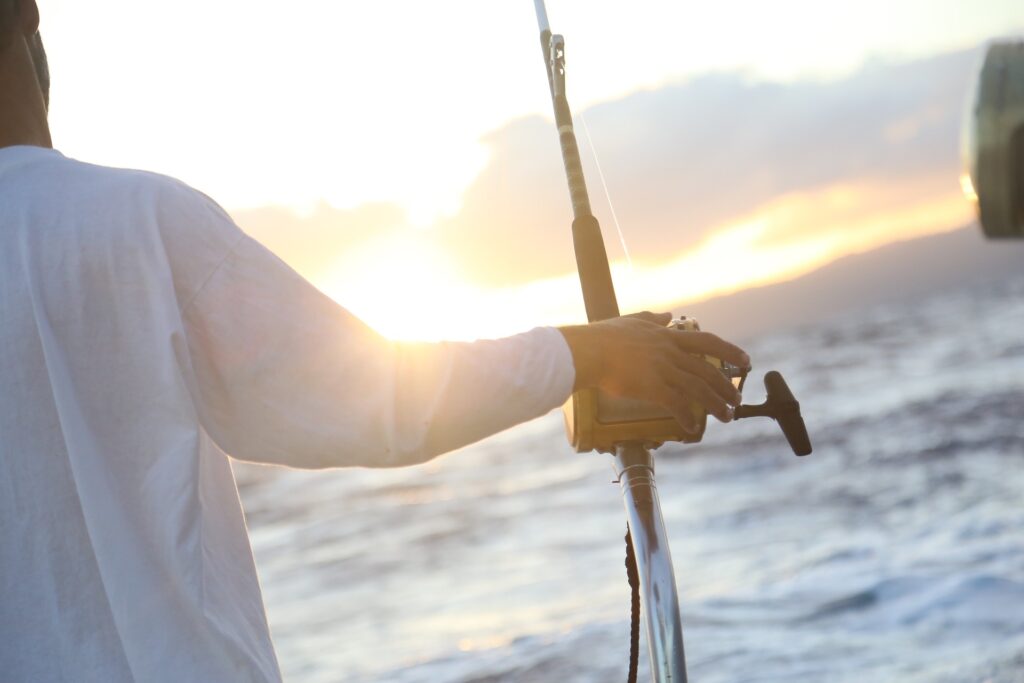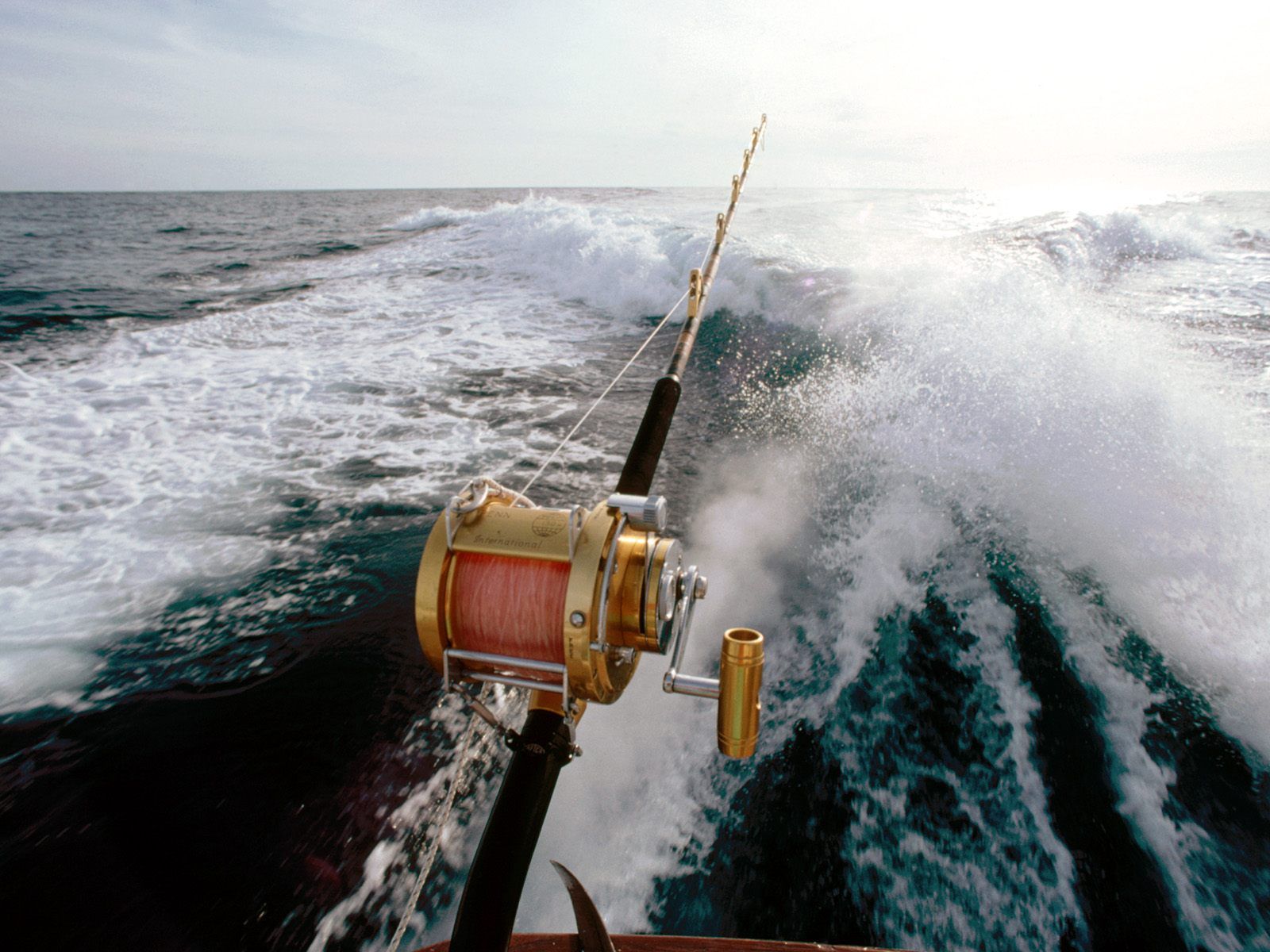
Taking a boat far offshore to chase the large and wild open ocean fish is one of the most challenging yet fun types of fishing.
Offshore sportfishing takes a lot of skill and experience. We’re going to tell you all we know in terms of fishing tactics and offshore tackle to improve your chances of success during your day on the water.
Offshore fishing gives you a wide range of options. It really depends on what species you are targeting that determines what techniques and tackle products you will use. To get a better understanding of what we mean by “offshore” fishing, you may want to read this article: Inshore VS Offshore Fishing?
For example if you are targeting something like yellowtail snapper which is a small bottom fish you will need dramatically different tools than if you were targeting a grouper located in the deep water which you would need beefier 80 lb. gear to go after.
Standard tackle products
You can use your standard or traditional tackle products in most offshore sport fishing conditions. When you are fishing from a boat offshore you generally are not going to be casting, you be you will be trolling your lures.
The beauty of standard tackle products is in the real in the real acts basically as a winch. The standard reel which is really a winch gives you leverage in the form of more power to pull in heavier and stronger ocean going species.
You’re going to need several different setups for a day of offshore fishing. Each one specific to the fishing situations and species you are targeting .
Lighter standard setups with 6 ft to 7 and 1/2 ft rod and reel is effective for light tackle species and also trolling for smaller fish like mackerel and you’re smaller yellow fin tunas and Dorado.
You’re also going to need some heavier tackle products as well, like the tournament quality Fathom Offshore fishing tackle.
You will need a medium sized setup in the neighborhood of 40 to 45 lb weights which enable you to go after both large and small species. A medium weight setup is basically what you would want to use if you could only choose one setup for a day of fishing.
And last but not least you’re going to want a heavy duty setup for targeting the largest game fish like the legendary Blue Marlins and you’ll also need something for trolling for large planers.
Okay let’s talk about bottom fishing first.
Bottom fishing is the simplest and easiest form of offshore fishing. You can increase the effectiveness of this technique using a spreader bar. The advantages of a spreader bar is that the weight is on the bottom and therefore the bait that attracts the fish is also on the bottom, bringing it closer to the fish’s attention.
The optimal fishing hooks
The hook is the most important piece of the rig. There are a lot of different styles and sizes of hooks to choose from. But these days most people in sport fishing use circle hooks period and even in places like the Gulf of Mexico circle hooks are required by law.
Circle hooks are a much better design because they reduce gut hooking in fish. Gut hooking is when the fish swallows the bait and the hook and then the hook attaches to the stomach of the fish and will often rip out the stomach during the fight.
When this happens it instantly kills the fish and therefore it negates catch and release. That’s why standard hooks are no longer used because they have been replaced with circle hooks which do not Hook to the insides of a fish.
Although circle hooks are not required everywhere most fishermen encourage others to use circle hooks to preserve the quality and abundance of the fish stocks.
It’s also important to note that the hook size should match the species that you are going after period for example if you are going after a blue marlin you will use a much larger hook size than you would if you were going after a redfish or a snapper.
Here is a good resource to learn more about the importance of circle hooks: https://www.dpi.nsw.gov.au/fishing/recreational/fishing-skills/catch-and-release/circle-hooks-benefits-and-tips#:~:text=Benefits%20of%20circle%20hooks,for%20hook%2Dup%20of%20fish.
Different types of fishing baits
Like everything else it depends. You use different rods reels and tackle products for different water conditions and different species.
A classic bait to use is shrimp both of the live and Frozen varieties. Fish just like humans love shrimp and they are most effective when fishing in areas with shallow water reefs. And they are also effective pretty much all year round.
Another option for offshore trolling is to use either live fish or cut up pieces of fish. The reason is because fish love fish big fish eats smaller fish and that is the law of the ocean. You can use frozen fish such as sardines or mullet but a lot of fishermen prefer to use live baits.
Some prefer to catch their own bait fish on the way out offshore period or some prefer to just pick some up at their local tackle shop. It is popular for the captain of the boat to stop at buoys and fill up the bait well with live baits and smaller fish like mackerel.
How to Troll for Fish Offshore
What is trolling? Trolling is simply driving the boat while pulling lures or baits as you wait around and hope for a fish to bite. As with everything else it’s more complicated than it sounds. There are variables such as the speed you are pulling the depth of your tackle as well as the types of lures that you are using and locations such as deep or shallow water.
There are several different tackle products you can use while trolling. One popular method is to troll with plugs.
Plugs have a specially designed lip on them which determines how deep the plug will hang off of your line.Plugs are very useful for fishermen because it allows them to not have to use other tackles such as weights or leaders. For certain species like wahoo it can be advantageous to use a leader in front of the plug.
Spoons
Another popular tool for trolling are spoons.
Spoons are ideal for slow speed trolling and have an aggressive bubble action when pulled through the water that does a good job imitating live bait fish. Spoons come in a wide variety of sizes and it’s best to have a full range of spoons so you can fit them to the conditions you find yourself fishing in.
Trolling spreads
A more advanced technique for trolling is to use a spread. A spread is used when anglers have multiple lines in the water at one time. a spread does just that it’s a pattern with some of your base being deeper some shallower some wider and some narrower behind behind the wash of the boat. The main point of the spread is to keep the lines from getting tangled with each other.
Everything from plugs to planers to trolling lures can be used in a spreader bar. The key with a trolling spread is to mix it up. You want to use a variety of links and widths and depths so that you don’t get your lines crossed up.
These are just a few of the myriad of options and thinks to consider when you go out for a day of sport fishing deep into the ocean. Like any skill you can get better with it over time and you will develop techniques that work best for you. These are just some general guidelines to help you get started in your sport fishing journey.

 Another boat fishing technique that is very successful, especially in summer and early autumn, is trolling.
Another boat fishing technique that is very successful, especially in summer and early autumn, is trolling. Learning and starting fishing is less complicated than it may seem, especially if this is done with the right start. Here are useful tips to learn how to fish in the sea from the boat with the main techniques in use, such as: bottom fishing, trolling, longline, spinning, live kab, inchiku and vertical fishing
Learning and starting fishing is less complicated than it may seem, especially if this is done with the right start. Here are useful tips to learn how to fish in the sea from the boat with the main techniques in use, such as: bottom fishing, trolling, longline, spinning, live kab, inchiku and vertical fishing